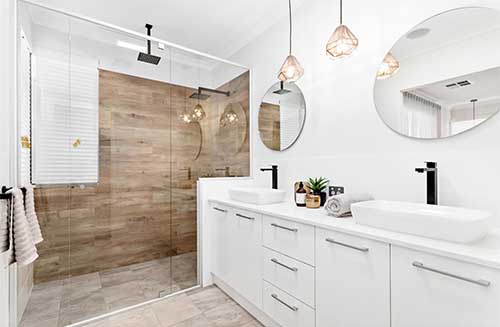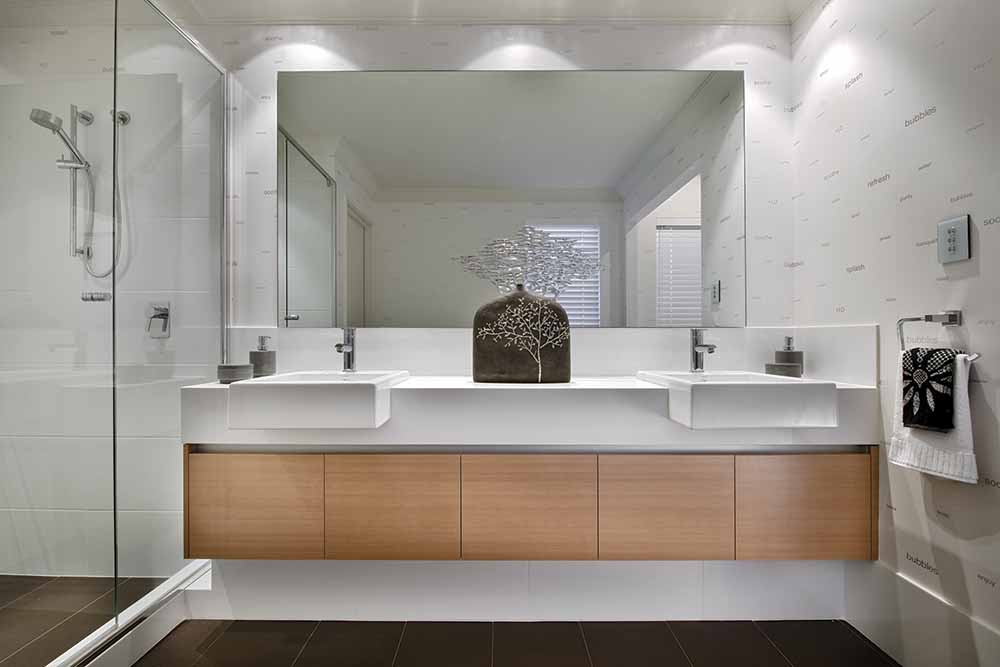You probably know that glass is the main component of mirrors, but did you know that glass is also a poor reflector?
It’s true, glass reflects only about 4% percent of the light falling on it. Then, how do mirrors get to become so reflective?
In this article, we’re answering the question “how are mirrors made?”. Keep reading our step-by-step guide to find out how the process happens.
Cutting and Shaping the Glass

The first step in manufacturing any mirror is cutting the suitable outline of the glass, known in the industry as a “blank”. For example, if the mirror is meant for a car, the glass will be cut out to fit in the vehicle’s mirror mount.
Some mirror suppliers cut their own glass while others obtain glass already in the form of blanks. Regardless of who does the cutting, very hard and finely pointed blades are used to achieve it.
- Diamond scribes or saws are often used because the diamond is much stronger than glass, so it’ll wear down the glass first.
The used cutting method depends on the final shape of the mirror. In one method, the blades or scribes cut partway through the glass, and In another method, a machine uses a diamond saw to cut all the way through the glass.
Typically, cutting is done before the metal coating is applied to keep it from flaking off the glass.
After cutting, blanks are placed in optical grinding machines which consist of large base plates with depressions that hold the blanks. The base is then placed against another metal plate carrying the desired surface shape (flat, convex, or concave).
Next, a grinding compound is spread over the blanks as they’re rolled against the curved surface. The grit in the compound wears away the glass surface until it becomes the same shape as the grinding plate.
Finer and finer grits are used until the surface is entirely smooth and even.
Applying the Reflective Material to Create a Standard Mirror
Once the glass surface is shaped and smoothed, it’s coated with the reflective material chosen by the designer. Whatever the coating metal is, it’s applied in a machine called an Evaporator.
The Evaporator heats the metal until it evaporates, depositing a coating on the surface of the glass. Blanks are positioned over holes in the upper plate of the Evaporator so that the vapor reaches the surface of the glass.
The shape of these holes will appear on the glass as metal areas, much like paint through a stencil. This is done to pattern the mirror.
Dielectric coatings, such as silicone oxides and silicone nitrides, can also be used either as reflective layers or as protective layers over the metal. They’re applied in almost the same way, but gases are used instead of metal.
Multiple evaporation steps may be combined to produce a multiple-layer coating. Finally, when all the appropriate coatings have been applied, the finished mirror is stored in a base or packed carefully in a shock-resistant package for shipping.
Wrap Up
The above information describes the typical processes for converting standard glass into an everyday mirror that you have in your home, whether this is a typical bathroom mirror or a mirrored wardrobe door.
The type of mirror used for a mirror splashback is completely different as glass splashbacks should be toughened to withstand the rigours of stovetops. Mirror splashbacks are a specially coated glass which can be toughened and offer a “mirror-like” finish.

